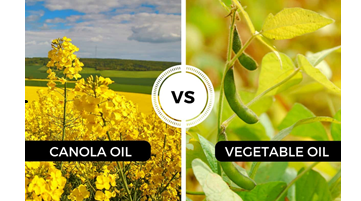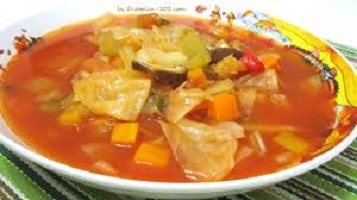Is Canola Oil Interchangeable With Vegetable Oil?
Is Canola Oil Interchangeable With Vegetable Oil?

Vegetable Oil and Canola Oil: Key Differences
While the two may seem interchangeable, they have unique properties that influence their nutritional value and best use in cooking. Here are three factors to consider:
- Smoke Point: The temperature at which oil breaks down, affecting flavor and health.
- Fat Composition: The type and amount of fats present, such as saturated, monounsaturated, or polyunsaturated fats.
- Flavor: Neutral oils are preferred for dishes where oil shouldn’t overpower other ingredients.
Are Canola Oil and Vegetable Oil Interchangeable in Baking and Cooking?
Yes! Both oils are versatile, affordable, and widely used due to their neutral flavor and high smoke points.
Canola oil typically has a smoke point of 400°F, while vegetable oil (often made from corn or soybeans) can reach up to 450°F. These qualities make them suitable for frying, sautéing, baking, and more.
The primary difference lies in fat composition. Canola oil is lower in saturated fats and richer in heart-healthy monounsaturated fats, making it a slightly healthier option for some recipes.
What Is Canola Oil?
This oil is derived from a crossbred variety of the rapeseed plant, developed in Canada to reduce harmful erucic acid levels.
It’s mild-flavored, low in saturated fat, and free of trans fats. It’s an excellent choice for high-heat cooking or when a neutral oil is needed.
What Is Vegetable Oil?
Vegetable oil is a broad category, including oils from seeds and fruits like soybeans, corn, grapeseed, and olives.
Commercial vegetable oil is often a blend, with nutritional profiles depending on its source.
While generally neutral in flavor and high in smoke point, canola oil tends to have the lowest saturated fat content among common vegetable oils.
Other Healthy Cooking Oils
If you’re exploring alternatives to canola and vegetable oil, consider these options:
- Avocado Oil: High smoke point and rich in monounsaturated fats. Ideal for roasting or drizzling.
- Extra Virgin Olive Oil: This oil is great for medium-heat cooking or salad dressings due to its robust flavor and heart-healthy fats.
- Coconut Oil: High in saturated fats but raises “good” HDL cholesterol. Use sparingly for baking or sautéing.
- Grapeseed Oil: Medium-high smoke point and high in omega-6 fats. Balance with omega-3-rich foods.
- MCT Oil: It is low-calorie and energy-boosting and is used in salad dressings or at low heat.
- Peanut Oil: Flavorful, balanced fats, with a medium-high smoke point for stir-frying or baking.
- Sesame Oil: Best for no-cook dishes or light heating to preserve nutrients.

Storing Your Cooking Oils
Proper storage ensures longevity and quality. Keep oils in a cool, dark place, and opt for smaller bottles if you use oil infrequently. Discard oil if it smells rancid.
Whether you use either oil, both are excellent staples for your kitchen.
Consider the nutritional differences for health-conscious cooking, but don’t hesitate to use them interchangeably for most recipes.


